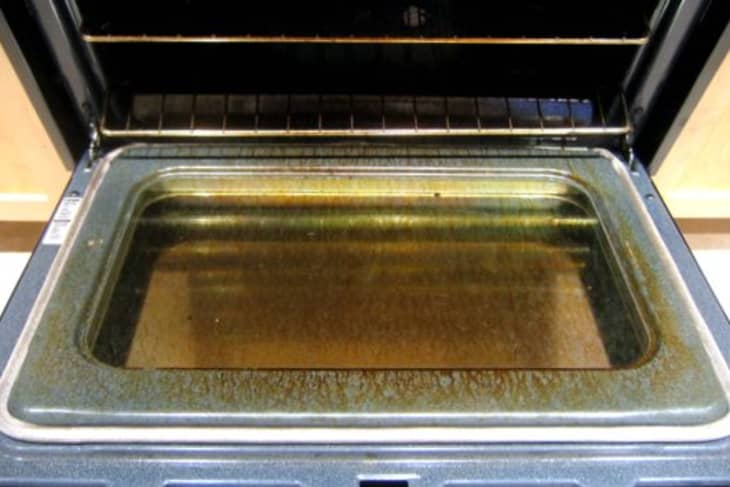Why You Should (Almost) Never Use Your Oven’s Self-Cleaning Function
This past week marked a special moment in my life. After living with an extra-small oven for years, pushing it hard — using it to test an entire book about casserole recipes, with pans that barely fit into its little cavity — I’m now the proud owner of a 30-inch double oven. I lucked out and found the exact oven I desired (and couldn’t afford at full price) for a fraction of its list price on Craigslist, barely used and with a 3-year warranty remaining.
I can hardly wait to fire it up — cakes, ribs, casseroles, oven-cooked beans — this thing will handle them all. I’ll tell you one thing I’m not going to be doing with this oven, though, and that’s using the self-cleaning cycle. Why?
I have been doing a lot of research on appliances, and as I researched ovens, one complaint seemed to arise over and over: “I used the self-cleaning mode and poof! The fuse burnt out!” When ovens went bad, the evidence seemed to say, it was after the self-cleaning cycle.
Why is this? I asked Adam Dahl at The Appliance Loft, an appliance shop in Cincinnati. He explained that yes, many oven repair calls are due to self-cleaning problems. Why? Two things.
First, newer ovens nearly always have hidden heating elements underneath the oven floor and above the oven ceiling. This is a great improvement over older ovens with exposed heating elements. If you drip cake batter, nothing will smoke or scorch. It’s easier to clean.
But this also means that it’s more difficult to vent the heat from those elements and keep air circulating. Self-cleaning, often with temperatures that go over 1000°, is a particular problem. The elements and the oven just get so hot — much, much hotter than the 350° to 500° range of normal baking — that sometimes fuses pop and control panels burn out.
Manufacturers, Adam implied, know this and they understand that self-cleaning cycles are a problem. But, he said, customers demand self-cleaning options. They’re so highly desired that it’s very difficult to sell an oven without one. And yet it’s pushing an oven to do something that is fairly extreme and difficult to engineer, and so there are genuine risks of damaging the oven.
And then, if the oven does have a problem, those hidden heating elements can make it much more expensive and difficult to fix. The entire oven has to be pulled out from the wall and fixed from behind, which makes it a more expensive service call, involving more time and trouble.
The answer? Well, the easy one is: Just don’t use your self-cleaning cycle. If your heating elements are hidden anyway, that makes cleaning with soap and water that much easier.
But wait! you say. I love my self-cleaning option. It hasn’t ever broken anything! Well, great! It’s just good to understand that you do run at least a small risk when using the cycle. If you really want to use it, some repairmen and manufacturers recommend running it for a small amount of time — an hour, perhaps — instead of a full four hours.
What’s been your experience with self-cleaning ovens? Do you have one? Does the self-cleaning work? Or do you just avoid it in favor of hand-cleaning?
Updated: Adam left a comment below to expand on his point, and I’m pulling it up here so everyone sees it:
Hey there – this is Adam (same guy from the above mentioned article). The calrod element in electric ovens can “burn-out” during use. but with a greater probability as the oven gets older and repeated uses of the self-cleaning feature. This calrod element is easy to replace if exposed, but much more difficult if hidden. And as some have posted, the electronic control panel can be at greater risk of failure when subjected to the high temps in the self-cleaning cycle. If you have a self-cleaning oven, you can use Easy-Off for self-cleaning ovens which will be less harsh on the porcelain finish. You can also use the Ammonia method: First, turn the oven on, let it warm to 150°F (65°C), and then turn it off. Place a small bowl containing 1/2 cup ammonia on the top shelf and a large pan of boiling water on the bottom shelf. Close the oven door, and let it sit overnight. The next morning, remove the dish and pan, and let the oven air out awhile. Then wipe it clean using the ammonia and a few drops of dishwashing liquid diluted in a quart of warm water — even old burned-on grease should wipe right off. Warning: Do not use this cleaning method with a gas oven unless the pilot lights are out and the main gas lines are shut off.
More Tips & Advice on Cleaning the Oven
• Our Adventures in Oven Cleaning
•
Good Question: How Do I Get Melted Plastic Off the Oven?
• Best Way to Clean Between the Oven and the Counter?
(Image: Elizabeth Passarella)
